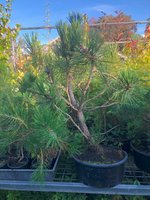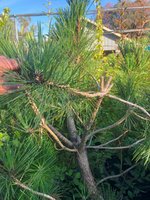Hello Shibui. This cutting back at old needles verses cutting back at already present buds caught my eye. Does this work on other pines like lodgepole, ponderosa etc or just JBP?
Pines are not native down here so, even for bonsai, we have very few to work with which means my direct experience is with JBP and JRP, one single mugho and a few younger JWPs that I still have little experience with so I can't tell you how other species react.
Removing all buds can kill the branch if the tree decides it won't form new buds at those old needles. The tree can just decide to divert energy to branches that have buds especially if they are higher up than the branch you are trying this on.
This observation is a very good one. My apologies for not pointing this out initially. Cutting back hard needs to be done on all branches at the same time. Be VERY careful leaving younger growing tips above a hard cut back as most trees will direct any energy to maintain existing growing points. I guess new buds need more effort so seem to be a second choice for most trees.
Note that this applies to most deciduous species as well as pines.
Just to show I have used this technique here are some pictures.
This field grown JBP has great bends down low but all current growth way out on the ends of long branches. Most strength at the end of a large sacrifice trunk without taper or movement. These branches were ALL chopped back to oldest needles last winter here.
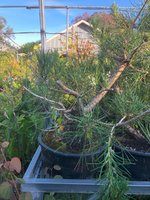
The results: Plenty of new shoots emerging from older needles.

Next tree is much taller with less bends and interest in the trunk. Also probably not as vigorous as the previous tree. Also chopped back to oldest remaining needles last winter.
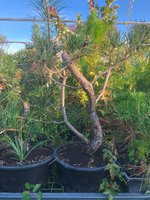
Results are not as spectacular. Enough new shoots on the branches to at least start work with and there's still hope for more through the rest of our summer.
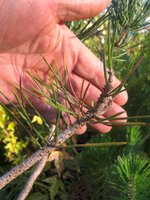
A couple of the upper branches have more and stronger new shoots but there is a backup if all else fails - a couple of small shoots direct from the old trunk lower down.

This one yet to be chopped. I've waited until normal decandling time to chop this one to see if I get a different response to summer chops on JBP.
